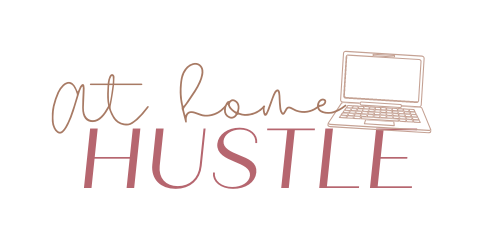Pouring Cooking Grease Down the Drain

Pouring cooking oil, fat, or grease down your kitchen sink might seem harmless, but it hardens and congeals inside pipes as it cools. Grease is dangerous for your drain pipes because it can rapidly harden after it drops deep inside your plumbing system. Over time, this buildup causes serious clogs and backups that can lead to burst pipes or sewage overflows. This simple habit change could prevent major blockages and plumbing disasters.
Using Chemical Drain Cleaners Regularly

When the sink slows, the bottle of drain cleaner seems like an easy fix, but that corrosive substance can eat away at metal or plastic pipe walls. Drain cleaners typically contain highly corrosive substances like lye or sulfuric acid, which can eat away at your pipes over time. While chemical drain cleaners may offer a quick fix, their aggressive ingredients can also cause long-term damage to your pipes. Frequent use can lead to weakened pipes and leaks, resulting in more serious plumbing issues down the line. Drano and similar chemical drain cleaners can be harmful to home drain pipes as they contain corrosive chemicals that may deteriorate pipes over time, especially if used frequently.
Flushing “Flushable” Wipes

Flushable wipes clog pipes, there’s no doubt about it. The wipes manufacturers will tell you a different story to keep selling you their products, but the experts at Mr. Rooter Plumbing have the experience to know that’s not the case. Unfortunately, flushable wipes go down the drain, but they don’t disintegrate. Wipes comprise a type of paper pulp held together with non-degradable materials like polymers and polyester. Studies have shown that very few so-called flushable wipes actually break down properly in plumbing systems. According to the National Association of Clean Water Agencies (NACWA), wipes result in significant additional operating costs for U.S. clean water utilities.
Overloading the Garbage Disposal

Things like potato skins, greasy scraps, coffee grounds, pasta, rice, and fibrous foods gel into dense clogs that jam blades and block pipes. Plus, disposing of greasy or starchy foods leads to a larger buildup deeper in the plumbing system. They have a very limited ability to grind food to safely let water carry it away. Additionally, many foods are fibrous and are clog prone.
Ignoring Small Leaks

That tiny drip under the sink or puddle on the bathroom floor? It might seem harmless, but left unchecked, it can degrade flooring, corrode pipes, and lead to mold or structural damage. That tiny drip under the bathroom sink may seem harmless, but hidden leaks can cause serious structural damage by allowing water to seep into walls, ceilings and floors over time. Plumbing experts say catching leaks early is key to avoiding large-scale disasters.
Running Excessively High Water Pressure

High water pressure might feel great during showers, but it stresses pipes, joints, and fixtures over time. Experts recommend keeping pressure between 40 and 80 PSI to avoid failure. Lowering excessive pressure minimizes leaks and burst pipes. Think of it like driving a car at maximum speed constantly – eventually, something’s going to break.
Flushing Non-Toilet Items

Flushing anything other than toilet paper and human waste is asking for trouble. Wipes, feminine products, diapers, and even “flushable” items can clog pipes or damage sewer lines, leading to backups or burst pipes. Wet wipes, feminine hygiene products, cotton swabs, and even certain types of toilet paper can lead to clogs and damage your drainage system. These materials don’t break down easily and can quickly accumulate, causing blockages that are difficult and expensive to remove.
Neglecting Regular Maintenance

Having a licensed plumber inspect your whole system at least once a year allows them to catch any potential issues early before they escalate. Those routine check-ups can identify small leaks, clogs, inefficiencies and more. The fact is, putting off plumbing repairs just gives those small issues time to morph into much bigger, more expensive headaches down the line. At the first hint of a plumbing hiccup, hop on it before it snowballs into a full-blown disaster costing you thousands to remedy.
Using Toilets as Chemical Disposal

Even worse, if your toilet is clogged with something that the cleaner can’t dissolve, like a child’s toy or thick cluster of toilet paper, the cleaner can wind up sitting in your pipes for an extended period of time, exacerbating the damage. As a drain cleaning solution sits, it can start damaging your toilet bowl. Over time, this generated heat can cause your toilet bowl to crack and occasionally trigger an explosion. When you’re dealing with toilet clogs repeatedly, these chemicals can cause serious damage to your entire plumbing system, not just the toilet drain itself.
Not Knowing Where Your Main Water Shutoff Is

Not knowing where the shut-off valve is or mismatching pipes during DIY can lead to flooding when things go wrong. Ensure everyone in your household knows the location of the main water valve and how to shut it off in case of a major leak. This knowledge can mean the difference between minor water damage and a catastrophic flood that requires thousands in repairs.
Treating Pipes Like They’re Indestructible

FlowGuard CPVC has an inherent resistance to corrosion and permeation, particularly when it comes to common additives in potable water supplies, such as chlorine. However, even the most durable pipes have limits. This is a sign that it’s time to inspect the system ASAP, as pipes in that state of degradation usually begin to leak outside the system relatively quickly! Old pipes especially need attention, and acting like they’ll last forever is a recipe for disaster.
Dismissing Warning Signs

Do you hear gurgling noises coming from your drains? Are you getting whiffs of rotten egg smells around your sinks? Those could signal major plumbing troubles like air pockets in pipes, sewage backups, or venting issues. A sudden jump in your water bill is more than just a pain in the wallet. Many homeowners brush off these red flags, assuming they’ll fix themselves – but pipes don’t self-heal.
